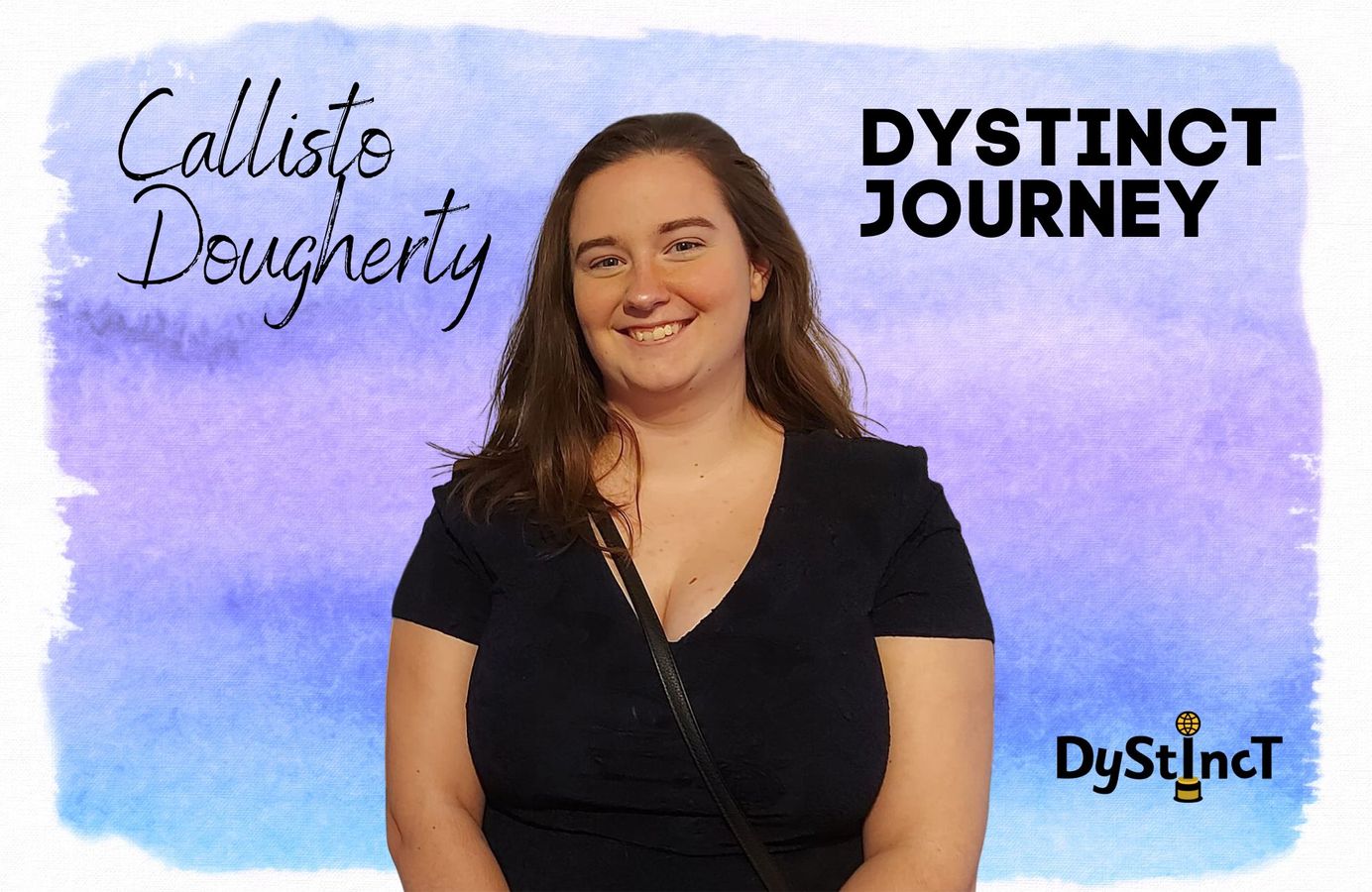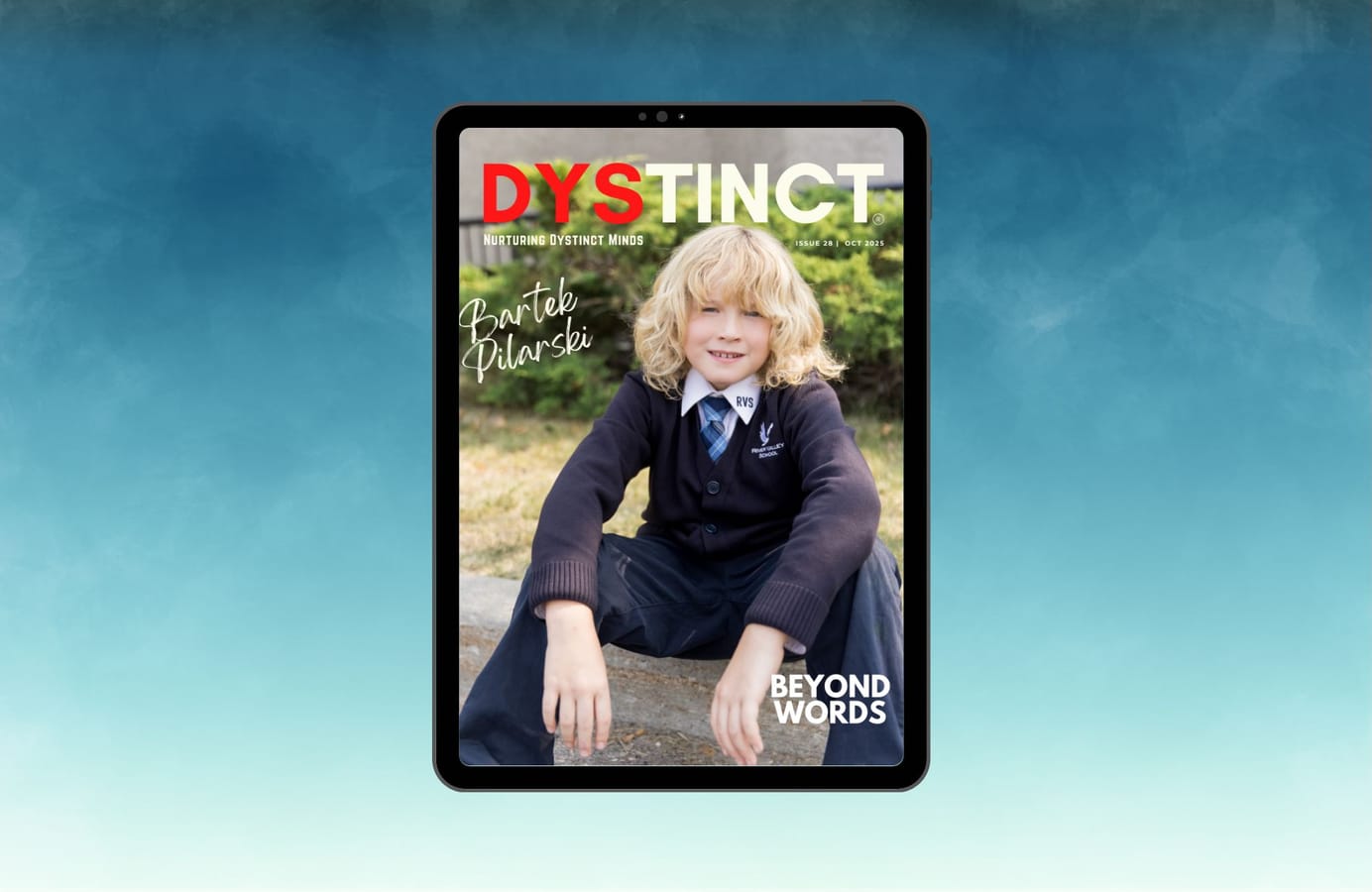
Issue 17: The Dystinct Journey of Callisto Dougherty
Callisto Dougherty's journey with dyslexia highlights the power of perseverance, self-discovery, and the invaluable roles of supportive family and educators in turning challenges into triumphs.

Callisto Dougherty's journey is a powerful reminder of how challenges can be transformed into triumphs. The 25-year-old found her early years marked by her parents' frequent relocations, a circumstance that would shape her life, instilling within her a profound sense of adaptability and resilience. Currently calling Guam her home, Callisto is working towards obtaining a B.A. in Fine Arts.
Callisto's family had a history of dyslexia, a challenge that would later become a defining aspect of her life. During her preschool years, subtle signs of dyslexia, including letter reversals and difficulties with phonics, began to surface. Callisto's mother, Katryn Dougherty, noticed these early signs but hesitated to jump to conclusions, thinking that they could still be attributed to her daughter's age and the learning process at that stage.
However, as Callisto progressed into 1st grade, the persistence of her letter reversals and ongoing struggles with phonics made it increasingly apparent that she might be dyslexic. As Callisto approached the end of first grade, the school suggested holding her back due to her reading struggles. However, Katryn recognized her daughter's potential and took a stand. "Being around her, it was obvious that she understood the materials being taught but was only struggling with reading and writing. Over the summer, we worked with her more, and they tested her before the start of 2nd grade. She had made some more progress over the summer, so they decided to allow her to enter 2nd grade," shares Katryn.
Being around her, it was obvious that she understood the materials being taught but was only struggling with reading and writing.
I was often taken out of regular class to be placed in a separate room on projects tailored to my needs. My friends believed that my need for this seclusion implied lower intelligence.
Fortunately for Callisto, her second-grade teacher, who later became the special education specialist for the entire district, played a crucial role in establishing an Individualized Education Program (IEP) for Callisto. Once Callisto received a formal diagnosis, her teacher became a strong advocate, emphasizing that Callisto comprehended the material being taught but just faced difficulties in translating it onto paper, setting the stage for the support Callisto needed.
Katryn, who is also dyslexic, had limited knowledge about dyslexia despite her own experience. She attended a private school from kindergarten through 8th grade, where she was taught coping mechanisms for dyslexia, including speed reading. Her educational background focused on mathematics, and she worked as a secondary education teacher. This background proved valuable in guiding Callisto through the IEP process during her school years, ensuring she received the support she needed.
While Katryn believed that her daughter received adequate support through her IEP during elementary and middle school, Callisto had a different perspective on the process. The implementation of her IEP sometimes left her feeling ostracized. Throughout elementary and middle school, she was often taken out of her regular class and placed in a separate room to work on projects tailored to her needs. While the accommodation provided was well-intentioned, Callisto felt that some of her friends misunderstood the situation. They believed that Callisto's need for this seclusion implied lower intelligence, and occasionally, they would try to convince her that she should be in the regular classroom with them.
Callisto's struggles with feeling different were compounded by her need to constantly compete against and compare herself with her gifted older sister. Callisto shares that her sister excelled in mathematics and continuously sought new intellectual challenges. The ongoing competition between the siblings added another layer of complexity to Callisto's journey as she navigated her education and self-esteem. "We were only 22 months apart, so competition could be fierce between us, and I judged myself very harshly on what I knew my sister could do. With the added pressure of a couple of wayward glances, I wound up assuming everyone thought the way I did - That I wasn't good enough, that I should be able to do more and that I wasn't trying hard enough, that every teacher and every helper could see right through me and know that I could be putting in more work."
The stigma associated with her need for additional support and accommodations further fuelled her desire to break free from the limitations she felt her IEP imposed on her. In elementary school, she often found herself assigned to a half-circle table in the back of her classroom. This table was where students with IEPs received extra help, but it was unfortunately dubbed "the stupid table" by other children who didn't understand the purpose.
The challenges weren't limited to her peers; some authority figures also made her school years more difficult. One such figure was her third-grade teacher, whom she refers to as Ms. Orange. Callisto recalls feeling judged by Ms. Orange, who had a habit of standing over her desk whenever she worked on assignments. Though Ms. Orange never directly spoke to her during these moments, Callisto could sense the scrutiny and risked making direct eye contact. Years later, Callisto learned from her mother that during a parent-teacher conference in third grade, her mother had explained to Ms. Orange that Callisto was a bright student but had difficulty expressing herself. In response, Ms. Orange had remarked that all parents believed their children were intelligent and expressed reluctance in providing lessons to students she felt weren't ready to advance to the next grade.
Luckily, I had a killer personality. I made friends both in my half circle tables and outside my half circle tables rather quickly.
Despite her challenges, Callisto's vibrant personality helped her forge friendships both among her peers with IEPs and those outside that group. She actively worked to bring these two groups of friends together on the playground, often intervening to prevent bullying. Callisto's assertiveness in defending herself and her friends stemmed from a piece of advice from her father: if she ever felt bullied and cornered, she had permission to throw the first punch, with the promise of ice cream as a reward. Fortunately, she never had to resort to this, although she humorously regrets not waiting for the opportunity to claim that ice cream.
This post is for paying subscribers only
SubscribeAlready have an account? Log in


